On April 19, Dmitry Petrov, a Russian anarchist fighting on the side of Ukraine, died in battle near Bakhmut.
For almost twenty years, Dima contributed immensely to the anarchist movement in Russia and Ukraine. Over the last ten years, we had only met once and rarely had affairs in common, so he may have altered his views on some questions. But, as his final message shows, in many ways, he remained unchanged.
Dima was, first and foremost, a person of action, not a theoretician. Although, a rather interesting synthesis of ideas was also observable in his practice that deserves broad discussion within the anarchist movement and will now need to be further developed without him.
I began to write this text immediately after Dima’s death was confirmed, but the text dragged on, and in the meantime, a lot had already been said. Therefore, I will concentrate on those aspects of Dima’s activities that have been written about less so far, namely his student activism and other (semi-)open projects in Moscow in the 2000s, his religious views, and the first stages of his underground activities.
The Years of Student Activism
The first time I saw Dima was in the lecture halls of the anarchist “Bespartshkola” [Non-Party School] in Moscow, probably in 2004 or even earlier. Dima was still very young, fourteen or fifteen years old, a serious and silent metalhead covered in patches. By contrast, just a couple of years later, he was almost always cheerful and positive, and remained so until the end. Initially, he was known as “Metalhead” in the scene, but this was quickly traded out for the nickname “Ecologist” in 2006 or earlier.
The main history of Dima’s activities is described in the obituary from BOAK (Combat Organization of Anarcho-Communists). But even before participating in campaigns against urban densification projects, waste incineration plants, and the deforestation of Moscow and the surrounding oblast, Dima attempted to create a grassroots student union. My recollection of my first action with Dima dates back to this time. At the Moscow Pedagogical University, we were handing out leaflets and the independent student magazine Heretic, which Dima and a few other anarchists published. The university security called the pigs, who then detained Dima and one other person. I quickly slipped away when the security arrived, but Dima decided to enter into an argument with them. He was arrested and held at the police station until his mother arrived since he was still a minor. He described this episode in the LiveJournal student struggle community, which he also created. After incidents like this, Dima naturally began to draw conclusions about the futility of legal struggle in the face of Russian realities. Oddly enough, the “Heretics” forum from 2006-2008 that Dima created is still active.
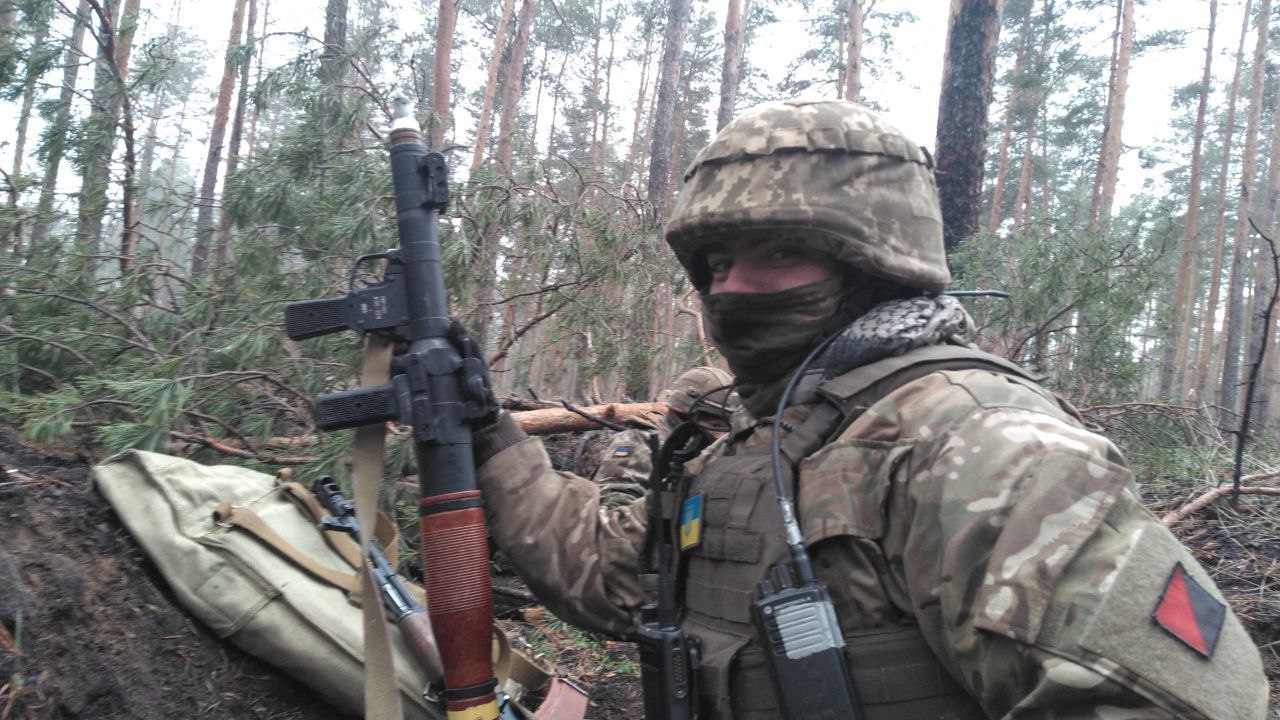
Dima Petrov. Photo: BOAK Telegram channel
In those years, the student body was highly apolitical, and aside from a couple of rare episodes at Moscow State University, virtually no student movement existed. Perhaps Dima was simply ahead of his times. In the process of attempting to create an independent student union, among other things, Dima took part in supporting the OD Group, a group of Moscow State University sociology students that protested against their poor level of education and the invitation to appoint Aleksandr Dugin as head of the Department of Sociology of International Relations.
The majority of the OD Group’s members were expelled, and in 2008, the group ceased its activities. However, Mikhail Lubanov participated in the same campaign and drew on this experience to create the MSU Initiative Group in 2009. In the beginning, the group was involved in protests against restrictions on guests in student dormitories. Lubanov would become world famous in 2021 after his attempt to run for the State Duma. The MSU Initative Group exists to this day. You can read about its history here.
Regarding the creation of an alternative student union, at least something was accomplished in Petrozavodsk, where the small alternative student union “Alterkom” operated. In 2007-2008, Dima and I went to Petrozavodsk, first to the Alterkom Fest and then to the Karelian Libertarian Forum. The events were interfered with by the local UBOP (Department for Combating Organized Crime), which apparently had nothing better to do. The Petrozavodsk UBOP even sent the Moscow UBOP to my dormitory for some kind of questioning.
But such hurdles did not stop Dima, who found his ideological home in KRAS (Confederation of Anarcho-Syndicalists), the Russian section of the anarcho-syndicalist international, which at that time more commonly operated under the label MPST (Interprofessional Union of Workers). KRAS-MPST was actively involved in protests against urban densification projects, which were at a peak during the economic boom before the 2008-2009 crisis.
KRAS-MPST was a small organization that had managed to merge two largely conflicting traditions: anarcho-syndicalism and ultra-leftist anti-trade union Marxism. KRAS-MPST tried to participate in all worker and resident initiatives in Moscow, the oblast, and beyond. In the fall of 2008, it had local groups and sympathizers in six cities of the Russian Federation. Everywhere, it promoted a direct action alternative: against the courts, against appeals to politicians and bureaucrats, and against petitions.
At that time, it was mainly local residents, and not NGOs, involved in protecting urban ecology. An interview with Dima from 2009 still exists online, which the magazine Skiing conducted at a rally in defence of the Butovo Forest. In it, Dima openly talks about spiking trees (which he engaged in on more than one occasion).
Reasons for the Emergence of Russian Insurrectionist Anarchism
The 2008-2013 wave of Russian insurrectionist anarchism had three sources of inspiration. In the first place was the lawlessness of the cops that anarchists, including Dima, constantly ran up against. Here is Dima’s account of how he was tortured by cops after attending a rally against densification in September 2007. Dima was still a minor when five cops beat him with punches and kicks, dragged him around the police station by his hair, and put a lit cigarette within two centimetres of his eye. Such actions are, of course, difficult to forgive and need not be forgiven.
In 2008, the first campaign of the Moscow anarchists from the 2000s took place. The campaign attracted broad public attention, which included protests against the torture of those held in the Sokolniki police station. Then, at the beginning of April 2008, the cops tortured anarchists who were simply walking in a park. This mistreatment provoked a public outcry. Anarchists organized a rally in Kitai-gorod, which grew into a small confrontation with the cops, and a march that blocked Tverskaya street in the centre of Moscow.
The second reason for the radicalization of the anarchist movement was the murder of anti-fascists by nazis. This included the murder of Stanislav Markelov and Anatasia Baburova by neo-nazis in the centre of Moscow on January 19, 2009. After their murder, anarchists and anti-fascists organized a window-breaking march in central Moscow. This was a step towards the movement’s radicalization. Naturally, Dima knew Stas, and he and Nastya had defended Georgian Abkhazian refugees against attackers on Yasny Proezd in spring 2008. As I was there myself, I can speak to this incident in more detail.
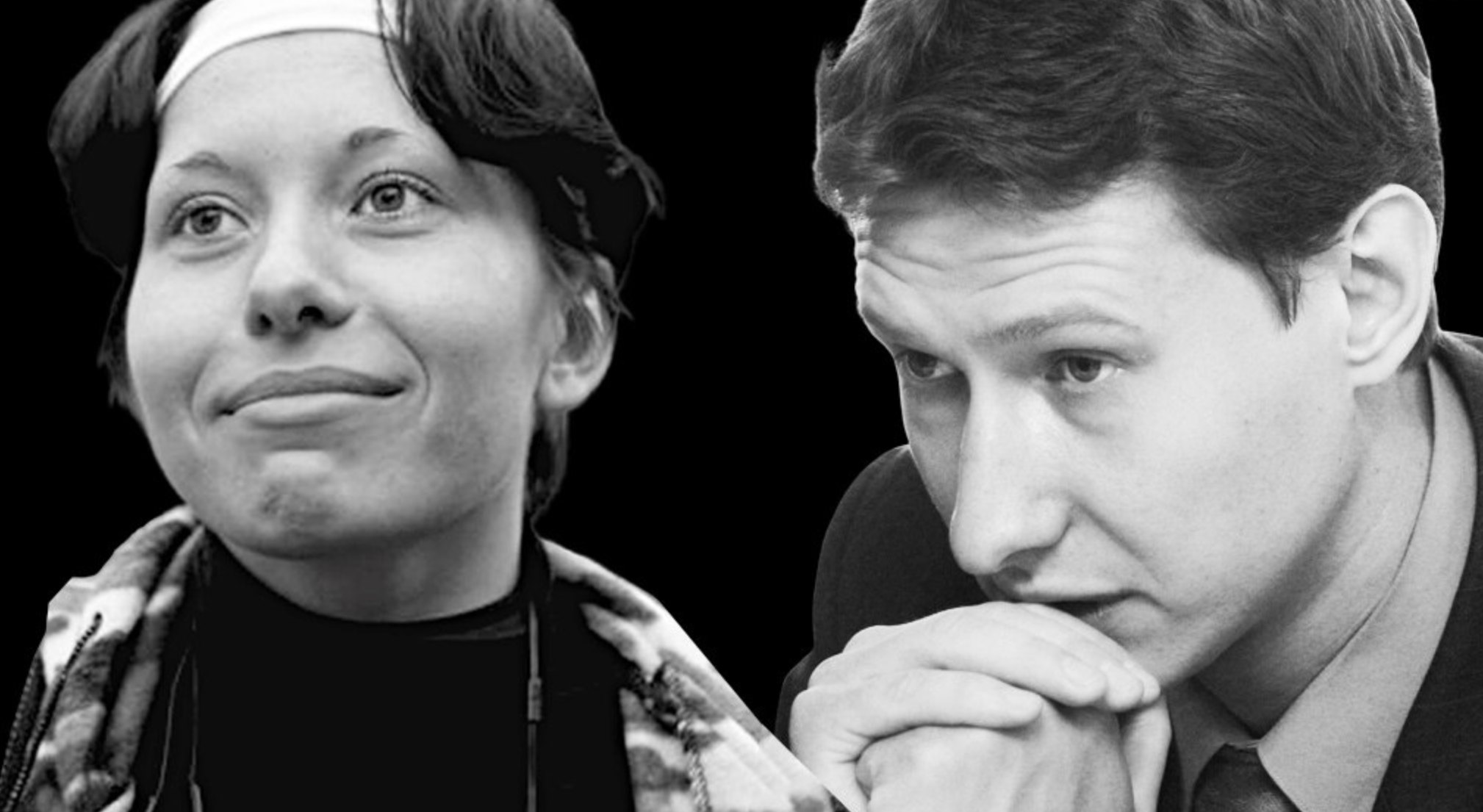
Journalist Anatasia Baburova and lawyer Stanislav Markelov, killed in the center of Moscow in January 2009. Photo: RFE / RL Graphics
Jailers versus Refugees
After the Abkhaz War of 1992, Georgian refugees settled in Moscow’s South Medvedkovo district in the former Smena garment factory dormitory (Yasny Proezd, 19). At the beginning of the 2000s, the authorities transferred the dormitory’s management to UFSIN (Department of Federal Penitentiary Service), which promised to evict the building’s tenants. The first conflict occurred in 2004, in which the tenants managed to remove UFSIN’s checkpoint from inside the dormitory.
In the summer of 2008, the conflict again worsened when the jailers obtained a court injunction to remove several families from the dormitory. It was either UFSIN officials or hired thugs (hereafter referred to as gopniks) of about sixty people who came to enforce the eviction. A battle ensued, lasting from June 24 to 25. On June 24, the gopniks dislodged the tenants from the third floor and installed new doors. Our group of anarchists and anti-fascists arrived to keep watch at night, as an attack on the second floor was expected but never materialized.
In the morning, we left for business. A little later, the tenants heard how the gopniks had been given 7000 rubles for their services and that the majority of them had left. The tenants again occupied the third floor, and the battle shortly resumed. In the afternoon, Dima, Nastya, and thirteen other anarchists arrived without me to assist the tenants. Outside the building, a fight started with throwing bottles and stones, and the anarchists were forced to retreat. Later in the evening, Dima and Nastya were arrested and fined. The tenants and UFSIN reached a truce, and the tenants succeeded in retaking the second floor. Dima’s account of these events can be read here.
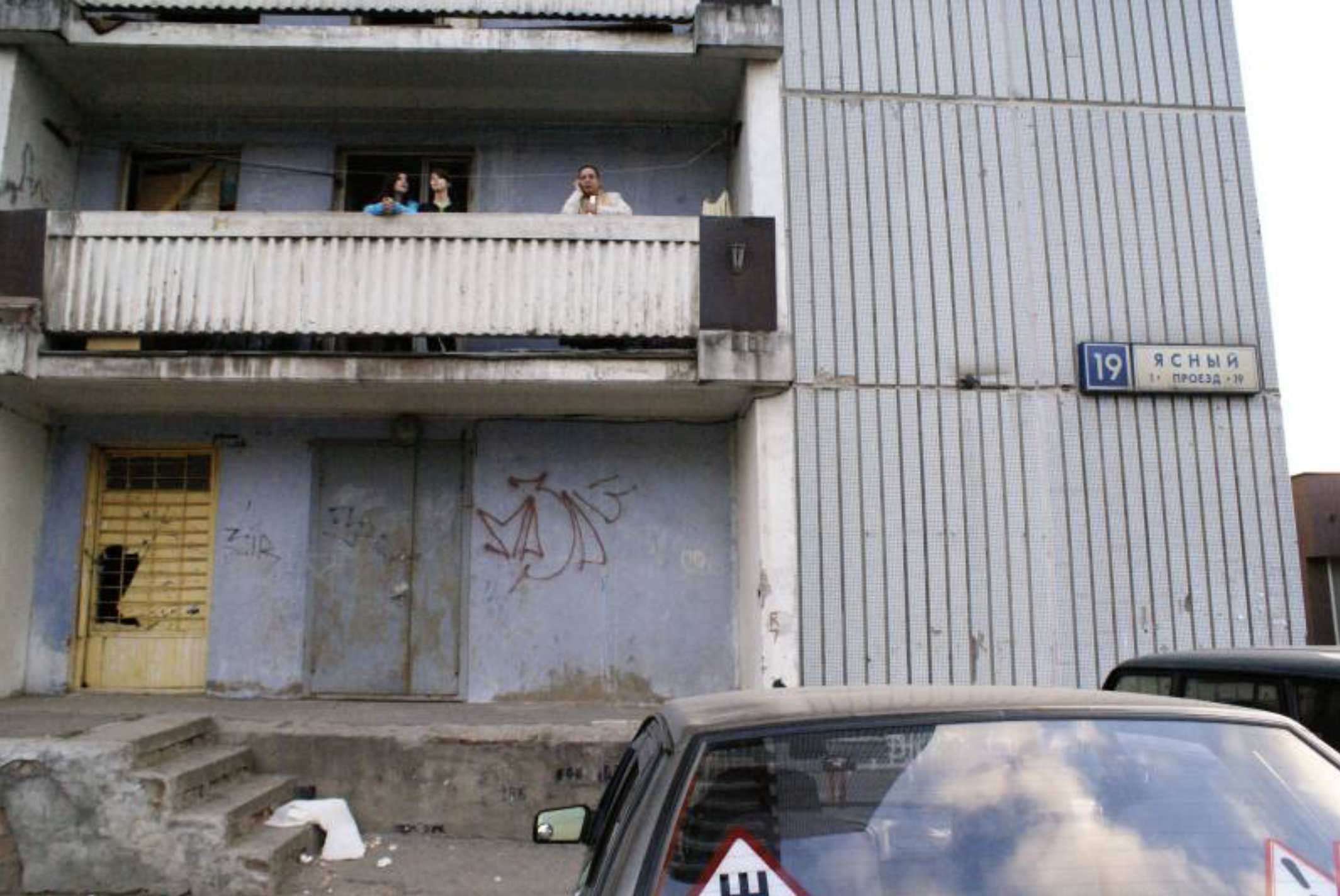
The former dormitory of the Smena sewing factory, 2008. Photo: shraibman / LiveJournal
The First Actions of the New Insurrectionist Anarchism in Russia
A third key reason for the emergence of a new insurrectionist anarchism was the Greek uprising of 2008. On December 6, 2008, police murdered the fifteen-year-old anarchist Alexandros Grigoropoulos in the Exarcheia neighbourhood of Athens. In Greece, riots immediately broke out, and the rest of the world shortly followed suit. Grigoropoulos was murdered on Saturday. The following Wednesday, the Greek embassy in Moscow was hit with Molotov cocktails. On Thursday, Moscow anarchists held an unauthorized protest march. It began near the infamous Solkolniki Department of Internal Affairs building before moving on to the Greek embassy, where protestors jumped on expensive cars and attempted to throw Molotov cocktails.
This was an unprecedented radical demonstration for Moscow. Although, a new era had, in fact, begun even a little earlier. On the night of November 30-December 1, Moscow anarchists attacked three bourgeois construction sites and set fire to equipment there that the residents of southwest Moscow opposed. By all accounts, it appears Dima’s underground activities began that night. If he had participated in direct actions prior to this event, he did not discuss them anywhere.
A few months later, similar actions began to be accompanied by video recordings. This may have been an innovation of Dima’s in the practice of insurrectionist anarchism. In the West, then as now, anarchists never filmed their actions—there was no need to since the cops themselves always acknowledged political acts of sabotage. By contrast, the cops in Russia are disinclined to recognize these types of actions, while insurrectionist anarchists demanded acknowledgment that their actions actually happened. At the same time, powerful videos showing acts of sabotage were, in themselves, propaganda for direct action.
Even before this, Dima had already participated in Antifa actions. In those years, a large number of anarchists were engaged in attacks on the far right, and Dima was no exception in this regard. Dima was close to the “Kostoloma [Bonebreaker] gang,” which had formed around Ivan “Kostoloma” Khutorsky, who was murdered in the fall of 2009. The group was smaller than the “main” Antifa group in Moscow, centred around Fyodor “Fedyai” Filatov (murdered in October 2008). However, unlike Dima’s direct actions against construction sites and the cops, his actions as part of Antifa are not documented anywhere, and someone other than me should write about them.

Action in memory of Ivan “Kostoloma” Khutorsky, Moscow, November 22, 2009. Photo: Yuriy Timofeev / Flickr
Modern insurrectionist anarchism originated in Greece, Italy, and Spain in the 70s and 80s, but discussion about it only spread to Western Europe in the early 2000s. Dima was familiar with this discussion and popularized it even before he started with his own actions. Between January and February 2008, Dima translated three texts on the theory of insurrectionist anarchism into Russian and published them on the MPST website: “Insurrection versus Organization” by Peter Gelderloos; “Anarchism, Insurrections, and Insurrectionalism” by Joe Black, first published in the Irish anarcho-platformist journal of the Workers’ Solidarity Movement, Red and Black, No. 11; and “Fire at Midnight, Destruction at Dawn: Sabotage and Social War” by Kasimere Bran, first published in the zine A Murder of Crows, No. 1.
In 2006, the artists Aleksandr Brener and Barbara Shurts translated a collection of insurrectionist texts into Russian, most notably containing works by Alfredo Bonnano. Dima was likely familiar with this collection. Later on, Dima translated other anarchist insurrectionist texts such as Bonnano’s “A Critique of Syndicalist Methods.”
News about the subversive actions of Dima and his comrades were first published on Indymedia or in one-off blog posts on LiveJournal and later on the Black Blog website, which Dima was also behind. The last action for which the Black Blog collective took responsibility was the destruction of the territorial police station in Povedniki, Moscow oblast, on the night of February 19-20, 2013.
That is, over the course of four years, Dima and his companions engaged in urban guerilla actions against Moscow’s police and developers in a city with over 50,000 cops (not including private security or FSB) and an endless number of surveillance cameras but were never caught. This requires an extraordinarily competent culture of safety, as well as luck. Even Durruti was arrested in France for his underground activities. Dima was never caught in relation to these cases. Moreover, Durruti lived long before our era of total surveillance, CCTV cameras, and internet monitoring.
On the other hand, unlike the French cops of the 1920s, the Russian cops of the 2000s and early 2010s did not take anarchists seriously. In those years, the main threats were considered to be Islamists, nationalists, and the National Bolshevik Party. The latter’s most radical action was the nonviolent seizure of the presidential administrative building, during which they threw a portrait of Putin out of a window. Many National Bolshevik activists were given serious prison time, and some were killed by the cops. Cops and FSB began to regard anarchists and Antifa more seriously only after the rest of the radical forces had been defeated. This attention was also, to a large extent, a consequence of Dima’s activities.

NBP activists throw a Putin's portrait out of the window during the non-violent seizure of the administration of the President of the Russian Federation. Photo: from open sources
Dima on Ethnicity and Religion
Dima was never one to run from conflict or disagreements. And while he could speak rather harshly about the uselessness of certain types of actions and tactics, Dima steered clear of truly destructive rifts. When the Operation Solidarity collective split in Spring 2022, Dima did not take a side in the conflict. Likewise, when there was a destructive schism within Autonomous Action (of which Dima was never a member), he maintained friendly relations with both sides. Given this, Dima would likely not want to recall the case when he himself was part of a schism. Nevertheless, I think it is necessary to reflect on since we can draw a few conclusions from it.
In 2008, an internal conflict within KRAS-MPST culminated in a split in the organization. A section of the membership accused Dima of nationalism due to his religious beliefs. Dima professed Rodnovery, a Slavic neo-pagan religion.
I had not spoken to Dima about his religious views for fifteen years, so I do not know how they may have evolved since then. More recently, those in closer communication with him say he publicized them less. But in his last message, he emphasizes that he is a Russian and that, at the very least, ethnic identity was still important to him.
Dima went to fight against Russia not in spite of his Russianness but because of it. To him, the imperialist war was shameful for Russia and all Russians, and he felt it was his personal responsibility to wash away this shame with blood. I don’t think he believed in the collective guilt of Russians, but he believed in his personal responsibility as a Russian. That is his identity, and, most likely, also his religious views played a critical role in his choice.
I don’t think Rodnovery is free from problems. Tying religion to ethnicity is naturally problematic and bizarre, given how quickly ethnic groups appear and disappear. Nevertheless, on all key issues regarding nationalism, Dima always took the correct position—he stood against any ethnic discrimination, denied the superiority of some ethnic groups over others, and did not support any nation-states. Dima was always among the first to defend refugees or migrant workers. In addition to defending the Yasny Proezd dormitory, he also participated in the defense of migrant workers in 2009. On this front, he has more credibility than the majority of anarchists who accused him of “nationalism.”

Dima Petrov. Photo: from open sources
Moreover, Dima drew on none other than Rudolph Rocker to support his position. Rocker was the main anarchist theorist of nation and ethnicity and a thinker who cannot plausibly be accused of nationalism. On his blog, Dima published a text by Rocker about the difference between a nation and a people.
Between 2006 and 2008, in addition to all his other projects, Dima ran the online forum “Pagan Antifa.” Dima’s goal was to reclaim the Rodnover faith from the nazis. In Moscow, Antifa’s activities included attacks on Rodnover events, including one famous disruption in 2005. Dima did not limit himself to online activities; already, in 2006, he reported an attack on nazi metalheads.
Dima’s project was unsuccessful. He had some sympathizers on his forum but remained virtually the only Rodnover amongst the anarchist and anti-fascist crowd. However, the project greatly angered the nazi Rodnovers, although they were never able to catch its creator.
I think Dima acquired neo-pagan ideas from black metal, his favourite music in those years. A large section of black metal fans in Russia and around the world are ultra-rightwing, but the subculture also has its libertarian representatives. Dima was especially fond of the American group Panopticon, which was associated with anarcho-primitivism.
For me personally, Dima’s practical actions were always sufficient evidence for what side he was on. Dima’s inner spiritual life, or anyone’s for that matter, is none of my business. Anarchism is not a totalitarian ideology and should not interfere with a person’s inner world.
In recent decades, the Russian anarchist movement has included representatives from, no less than, various types of Christianity, Hinduism, and Buddhism. The proportion of religious anarchists in Russia is substantially more than in the West. There are many Orthodox Christians amongst the Russian anarchists despite Orthodoxy’s closeness with Russian authoritarian statehood for the past 300 years. All of these religions have their own contradictions with anarchism. On the other hand, they answer questions that anarchism cannot and should not answer. Anarchism is a social philosophy and political system that does not consider questions of spirituality and metaphysics. Orthodox Christians were among Dima’s opponents in the movement, but no one attacked them for the contradictions between Orthodox teachings and anarchism.

Dima Petrov. Photo: BOAK Telegram channel
KRAS-MPST split into KRAS and MPST: in the former remained traditional anarcho-syndicalists, while in the latter were Dima and those interested in ultra-left ideas. KRAS actually completely left the social arena. They participated in transnational discussions within the International Workers’ Association, published news about the International’s activities in other countries, and published books about the history of the anarchist movement. MPST carried out a flurry of online activity with translations and proclamations in the spirit of ultra-left ideas, but its most active participant, Dima, quickly concentrated on creating a broader underground front in the form of the Black Blog. The Black Blog no longer hosted massive articles about the harm of trade unions in the spirit of post-Council Communism. The approach was straightforward and practical: apart from declarations of direct action, there were few texts on the site, and it even published pieces on the experience of underground Leninist groups from the previous century, perhaps as a way to mislead the cops.
Dima did not lose heart after the split, but nonetheless, I believe many anarchists treated him unfairly. The anarchist movement should be more tolerant of those in its ranks with views and interests not directly related to anarchism.
Dima was never a member of Autonomous Action, but the Moscow group decided to support him against the unfair accusations. In 2010, the group issued an appeal demanding Dima’s accusers substantiate their allegations in a court of arbitration. Dima published the statement on his blog. But the other side delayed the selection of judges for a very long time: obviously, tangible proof of Dima’s nationalism did not exist. After much foot-dragging, Autonomous Action-Moscow adopted the position that the other side, of its own free will, had left the anarchist movement since it had effectively abandoned the arbitration court. Over several years, Autonomous Action-Moscow refused all cooperation with KRAS. In fact, KRAS insulated themselves from the rest of the Russian anarchist movement, with the exception of lovers of anarchist history, who stand a bit apart from anarchist activism in Russia.
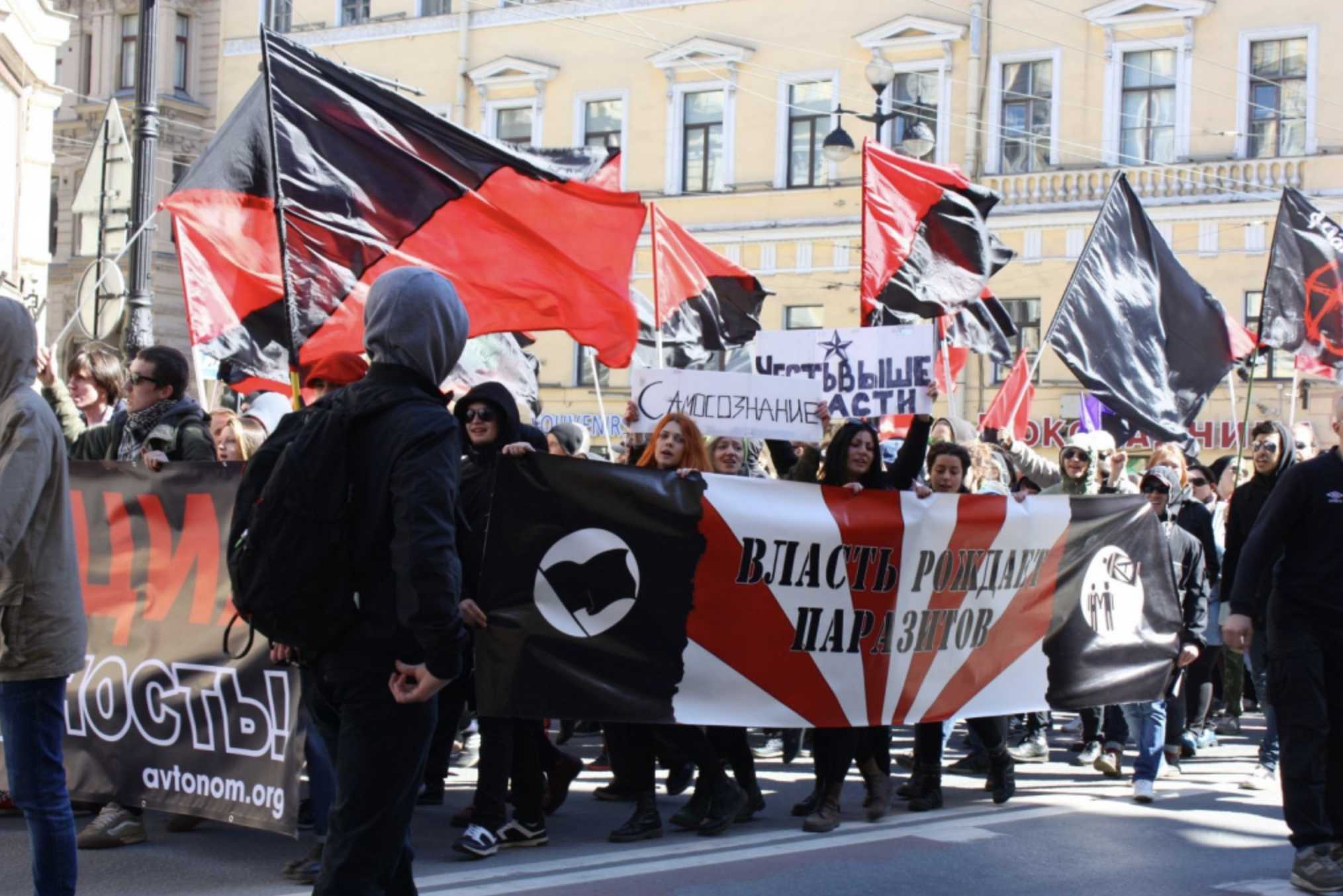
Autonomous Action protest. Photo: avtonom.org
What happened to Russian Insurrectionist Anarchism?
Insurrectionist anarchism’s relationship with the rest of the anarchist movement was not always without problems. Many regarded Dima’s activities as too risky.
In particular, much controversy arose around the attack on the newspaper Komsomol’skaya Pravda in December 2009, after its special correspondent Dmitry Steshin described the anti-fascist Ivan Khutorsky (murdered in November 2009) as a “crime boss.” Steshin was also known for his racist articles against migrants. During the attack, the Komsomol’skaya Pravda office was covered with smoke bombs and leaflets.
A few years later, Steshin’s connections with the underground nazi group BORN (the Combat Organization of Russian Nationalists) were revealed. Steshin had supplied the killers of Markelov, Baburova, Khutorsky, and other anti-fascists with the murder weapons and helped them escape. However, he was never charged with assisting BORN and, over the course of fifteen years, has served as an important propagandist of ultra-right ideas and the war in Donbas. At that time, sympathetic journalists feared that the attack on Komsomol’skaya Pravda could discredit Antifa amongst journalists, but no such reaction occurred. Over the course of events, none of the independent journalists gave a damn about Komsomol’skaya Pravda’s and Steshin’s “freedom of speech.” Now it is hard to imagine that any anarchist or anti-fascist would criticize the attack on Steshin.
A second current within Russian insurrectionary anarchism also emerged that slightly differed from Dima’s. A current was formed around the blog “From Russia with Love”, which appeared in 2012. It was closer to Western insurrectionist anarchist tendencies like the Italian “Informal Anarchist Federation” or the Greek “Conspiracy of Fire Nuclei.” The latter group openly identified themselves as proponents of anarcho-individualism and anarcho-nihilism, dismissing the importance of society and sharply critical of “social” anarchism. Prior to the emergence of a separate blog, statements from this tendency were also published on the Black Blog.
From time to time, in various anonymous online discussions, there were tensions between these two tendencies. Dima and the Black Blog still strived towards a social revolution in the long term, even if mass social protest in Russia was recognized as difficult at the moment. Dima’s tendency corresponded with an international network of insurrectionist anarchists united primarily around the English-language 325 magazine. Overall, Dima’s group slightly stood apart since the insurrectionist movement, at its core, was not very interested in “awakening the masses.” But in general, Dima never published criticism of the other tendencies within insurrectionary anarchism, and the commentary here should be considered my interpretation of the disagreements between the various tendencies.
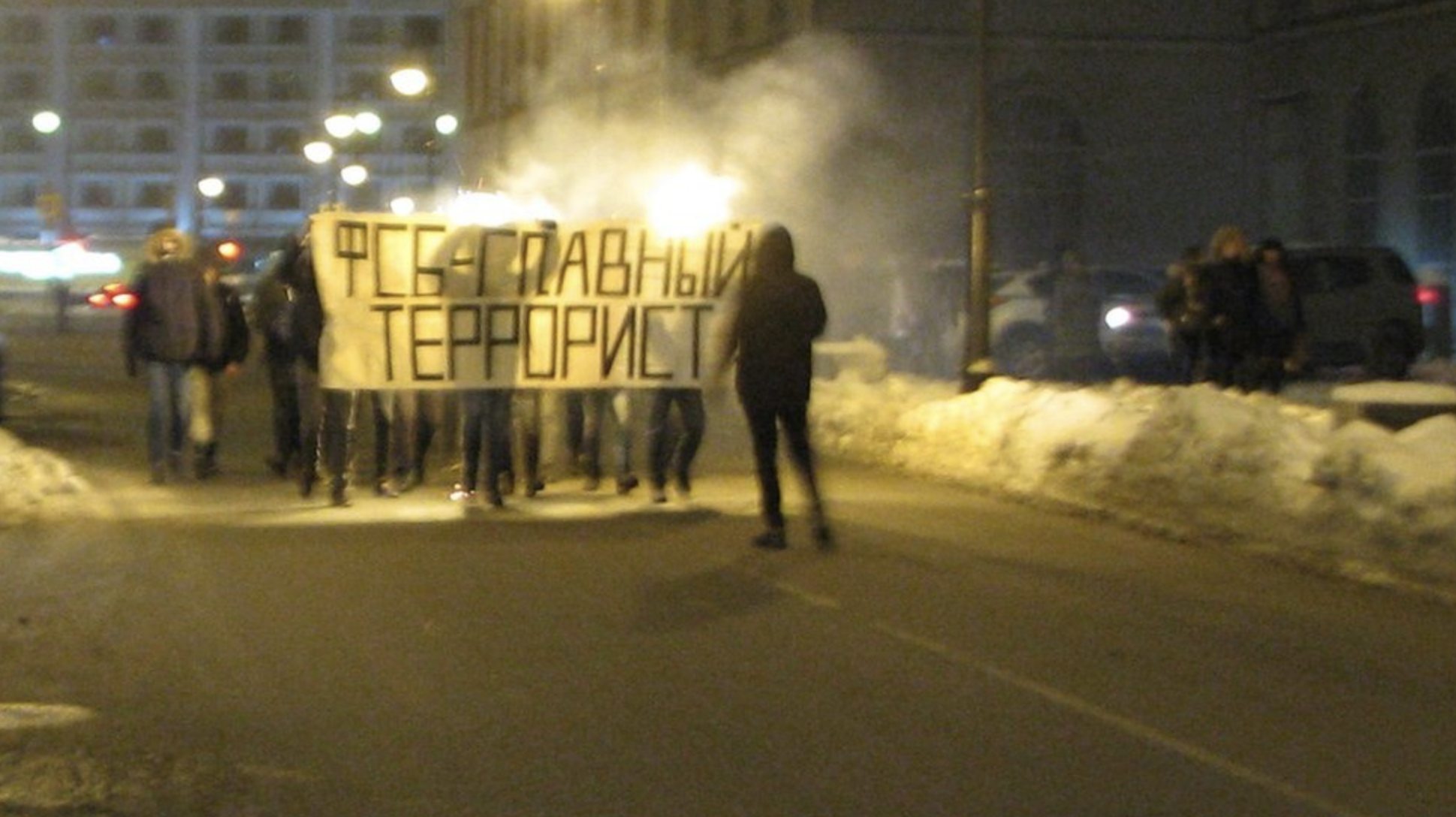
Action in support of arrested anti-fascists near Lubyanka, Moscow, February 15, 2018. Photo: "People's self-defense" in VK
At the turn of the 2010s, insurrectionary anarchism in Russia was a large-scale current, with attacks occurring in dozens of different cities and regions. What, then, can explain its decline and virtual disappearance?
Since I was not a participant myself, I can only speculate. Most likely, the main problem for insurrectionist anarchism was attracting new cadres—generally, this is the main problem for all underground organizations everywhere.
The huge machinery of the FSB and the Centre for Combating Extremism (Centre E) never succeeded in catching anyone, but there were a few close calls. In particular, Centre E employees in Moscow hid in an ambulance near the house of a young girl (with alleged connections to insurrectionist anarchists). They attacked the girl, but she fought back and wounded one officer. They were so ashamed of the incident that they did not even charge the girl with anything.
It's possible the problem of recruiting new cadres was one of the reasons why Dima partially returned to more open activities—specifically in support of the Kurdish movement. Additionally, insurrectionist anarchists were gradually deprived of media platforms. All Russian Indymedia sites were progressively shut down, and around the mid-2010s, Autonomous Action decided not to publish statements from insurrectionary anarchists in an effort to prevent their site from being blocked in the Russian Federation. Nevertheless, the site is now blocked, but publishing such statements now might create much more serious problems than ten years ago. If underground and (semi-)open anarchist activities could coexist in symbiosis on the same shared platforms in the early 2010s, such is not the case today. This is scarcely the main reason for the decline of insurrectionary anarchism in Russia, but it is certainly one of the reasons.
It is obvious that the masses in the early 2010s were not yet ready for the radical actions of the insurrectionist anarchists. More precisely, a great number of people sympathized with the actions of Dima and his friends, but they themselves were not ready to follow this path. Now, with dozens of arson attacks on military recruitment stations and direct actions on railroad tracks being carried out, public demand for these kinds of actions is already much higher. This was, in general, a recurring theme in Dima’s life: from student activism to radical direct action, he was perpetually ten years ahead of his time.
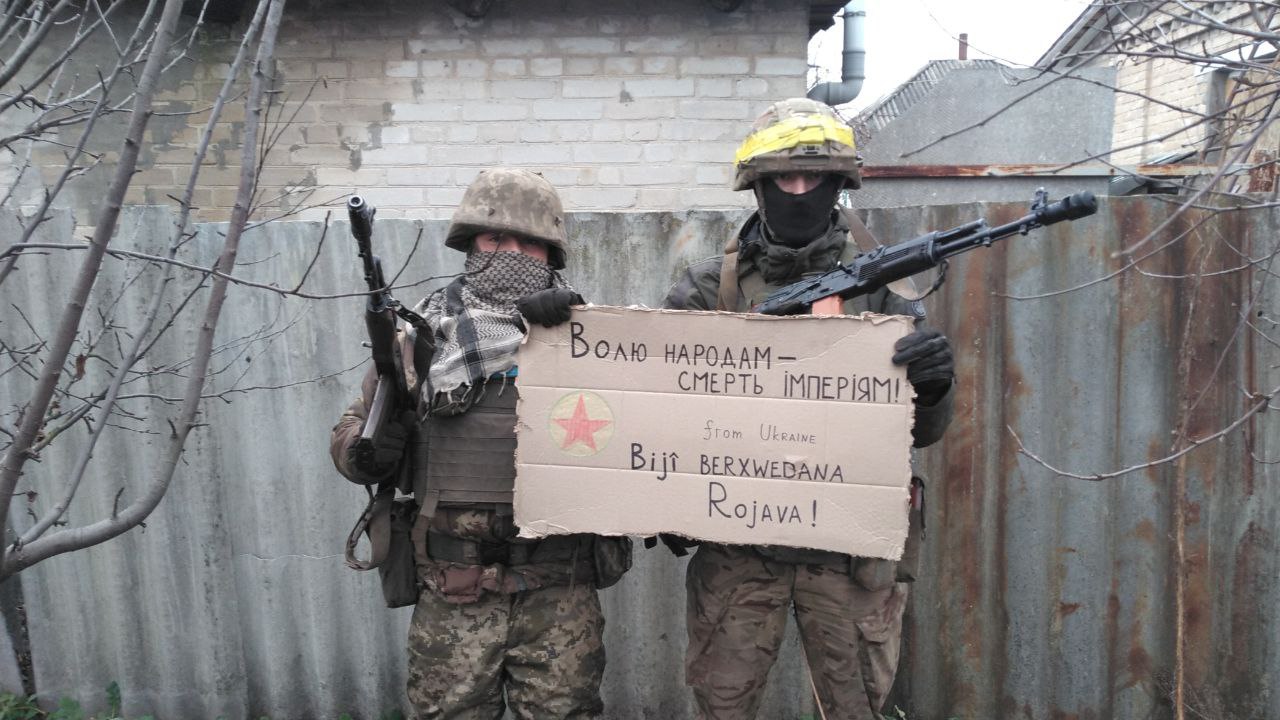
Dima Petrov (left) with сomrade. Photo: BOAK Telegram channel
What are the Main Lessons of Dima for Us?
Firstly, the anarchist movement should be more tolerant towards the spiritual life of its members. We may not always understand each other’s inner worlds, but we must be respectful in this regard.
Secondly, social conflicts and new frontiers of struggle constantly appear and recede. The main thing is to seize the moment by flexibly foregoing obsolete practices and developing new ones. If such a project fails, then it could simply be premature, and after five to ten years will come to fruition.
Thirdly, underground activity does not achieve success in spite of society but only together with it. Even when fighters, by virtue of their circumstances, are forced to act in isolation from society, they still need to appeal to the broader layers of society.
And fourthly, there is always hope. Over the course of four years, Dima and a very small number of fighters waged an underground insurrectionist struggle in the very heart of the modern Russian empire with its cops, and security forces, and he was never caught. Nobody trained him, and he mastered all the required conspiratorial skills himself. Nobody sponsored him, and nobody helped him. What could have been achieved by a similar group of 100 or 1000? Anything.
